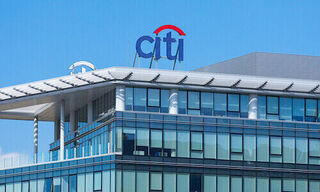Golden Gate Ventures closed US$35M from an international mix of investors and advisors to the fund, including Temasek, Eduardo Saverin (co-founder of Facebook), and Monitor Capital Partners, a European multi-family office.
Additional partners included Singapore’s National Research Foundation, NAVER (parent company of LINE messenger), and Far East Ventures, the venture capital arm of Far East Organization, one of the largest property developers in Southeast Asia.
On the heels of this announcement, Golden Gate Ventures released its first ever research report comparing investment trends in Southeast Asia to those of China and India. This report sheds light on the state of investment in South East Asia and hints to explosive growth in the region.
The reports finds the number of deals and the investment climate in Southeast Asia mirrors that of China and India in 2005 and 2010 respectively. Based on the analysis, Southeast Asia is predicted to emerge as a foreign investment destination in 2016.
“If you’re looking to invest in Asia, China’s not only overpriced, but it’s starting to cool down. Earlier this month the Chinese Securities Regulatory Commission went so far as to put a moratorium on tech IPOs, an action that has since stunted as many as 28 IPOs. Meanwhile Southeast Asia has explosive growth in development and investment at much lower valuations – it’s like going back in time and getting in on the ground floor of China’s tech scene,” said Vinnie Lauria, Managing Partner, Golden Gate Ventures
Bridging Silicon Valley
Golden Gate Ventures has invested in more than 25 companies across 7 countries in Asia. Their portfolio has created over 500 new jobs in the region and is projected to generate over $60M in revenue for 2015. Golden Gate Ventures has helped bring top tier VC firms into the region, including follow-on investments into their portfolio by Sequoia Capital into Carousell and 99.co. Additionally, they’ve successfully helped startups expand to the US such as Bessemer backed Nitrous.io.
The firm will continue to focus on internet and mobile startups targeting the Southeast Asian consumer and SMB markets, in sectors such as e-commerce, payments, marketplaces, and SaaS applications. In addition, Golden Gate Ventures will maintain its ‘community first’ approach, and continue to support the ever-maturing ecosystem through events, mentoring, and community-building activities such as WalkaboutSG, a city-wide open house that showcases Singapore’s top startups, co-hosted by SGX, the Singapore Exchange.
Jeffrey Paine, a Founding Partner at Golden Gate Ventures said: “We’ve been quite fortunate with our companies to date. We’ve had no startups drop off the radar, on the contrary we’ve been able to bet on terrific entrepreneurs building high growth companies, such as online grocer Redmart, baby related e-commerce Bilna, online social credit scoring company Lenddo. And we’ve worked with great regional co-investors, such as Jungle Ventures, with inventory management SaaS company TradeGecko.”
Why Now
The Southeast Asian market has some of the fastest growing economies in the world due to an emerging middle class, strong government stimulation, high technology adoption rates and widespread industry investments leading to GDP growth of 6-14% year over year. With mobile devices becoming so affordable, each month there are 1 million new internet users coming online for the first time.
Sectors such as e-commerce, mobile payments, and logistics and inventory management systems are beginning to see enormous growth, and the opportunities are becoming more apparent. Investors, having already poured over US$500 million into investments across the region, will continue to do so, so long as these trends continue as expected.
Government support has been a catalyst as well. The Singapore government committed US$12.6 billion from 2011 to 2015 for scientific research and development. In 2015 alone, the Malaysian government committed US$500 million for research, innovation, and investment. This has had a spillover effect into the rest of the region, where you see companies expand into neighboring countries, such as the recent acquisition by LVMH of Luxola in Singapore, initially co-funded by Singapore’s National Research Foundation (NRF) and GrabTaxi in Malaysia, initially funded by a grant from Malaysia’s Ministry of Finance agency, Cradle.
With over 600 million people, as the region looks ahead to economic integration under the Association of Southeast Asian Nations (ASEAN) Economic Community, SEA is emerging as the third pillar of growth in Asia, after its predecessors China and India.




















